Qing Tian He: Where Scenic Landscapes Meet Rich Chinese Heritage
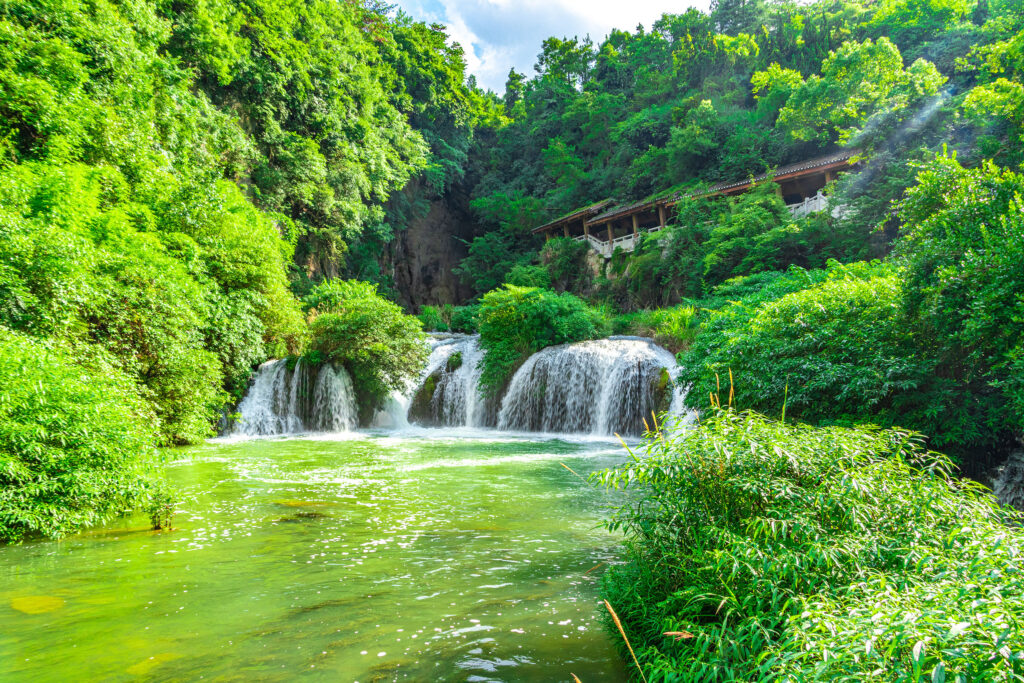
An Essential Guide to Visiting Qing Tian He
In This Guide
- An Essential Guide to Visiting Qing Tian He
- The Rich History and Legends of Qing Tian He
- Main Highlights: What You Absolutely Can’t Miss
- Planning Your Visit: A Practical Guide
- Tickets: Prices, Booking, and Tips
- How to Get There: A Complete Transportation Guide
- Local Cuisine and Accommodation Nearby
- Frequently Asked Questions
- Final Thoughts on Your Trip
Nestled in the heart of China’s rich historical tapestry, Qing Tian He, or the Qing Tian River Scenic Area, offers international travelers a unique glimpse into both the ancient and modern cultural heritage of this vibrant region. Located in the picturesque city of Jiaozuo, Henan Province, this stunning destination is not just a feast for the eyes but also a treasure trove of history, art, and natural beauty.
As you traverse the tranquil banks of the Qing Tian River, you will find yourself enveloped in a landscape that has inspired poets and artists for centuries. The area is renowned for its breathtaking scenery, characterized by lush mountains, clear waters, and captivating rock formations. The river itself, with its crystal-clear waters, reflects the surrounding beauty and provides ample opportunities for outdoor adventures such as hiking, boating, and photography.
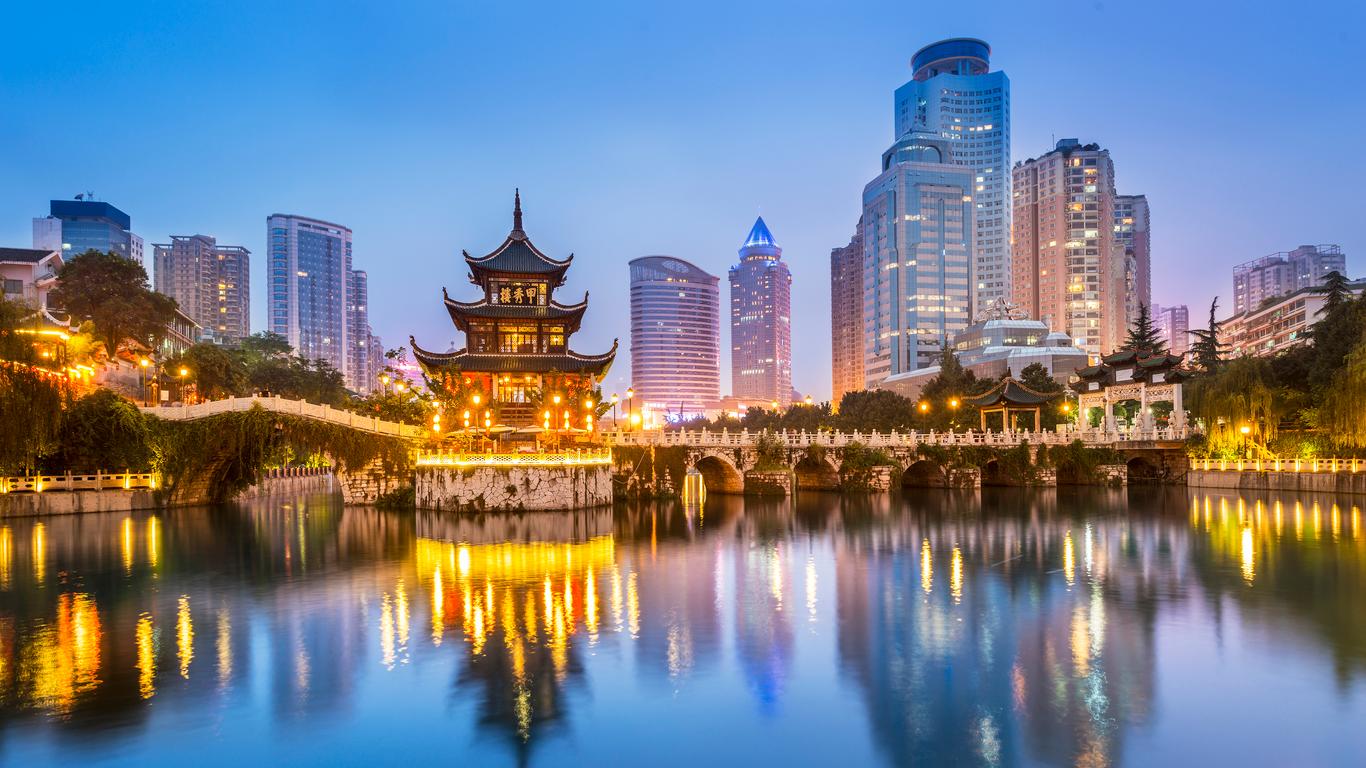
Qing Tian He.
A Journey Through Time
Qing Tian He is steeped in history, boasting attractions that date back to the Northern and Southern Dynasties. Not only does it serve as a serene retreat from the bustling cities, but it also invites you to explore remnants of China’s storied past. The Shimendong (Stone Gate Cave) Scenic Area, believed to have been a prominent site during the Northern and Southern Dynasties, showcases ancient rock carvings and formations that tell tales of a time long gone.
Additionally, the area is notable for its stone carving tradition, a craft that has flourished for centuries and is on display at the Qingtian Stone Carving Museum. Here, visitors can marvel at intricately crafted sculptures and learn about the significance of stone carving in Chinese culture, which often symbolizes strength, permanence, and artistic expression.

Qing Tian He.
Cultural Highlights and Local Flavors
Qing Tian He is not just about breathtaking landscapes; it is also a cultural hub. The Qingtian Muslim Temple and Qiansi Rock Culture Park offer insights into the region’s diverse religious and cultural practices. These sites are perfect for those looking to deepen their understanding of local customs and traditions.
The culinary scene in Qing Tian He is equally compelling. Visitors can indulge in a variety of local delicacies that reflect the region’s rich agricultural heritage. From street food staples to gourmet dining experiences, the flavors of Qing Tian He are a journey in themselves.
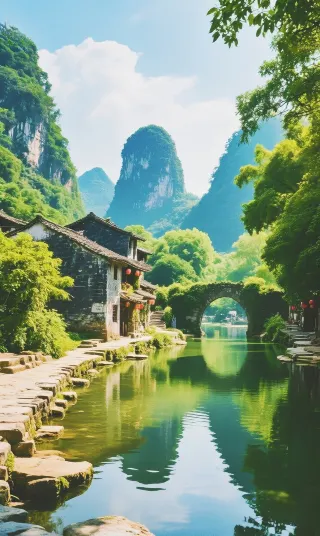
Qing Tian He.
Plan Your Adventure
To make the most of your visit, consider the best times to explore the scenic area. The spring and autumn months offer mild weather and stunning colors that enhance the natural beauty of the region. Accommodations range from cozy guesthouses to luxurious hotels, catering to all preferences and budgets.
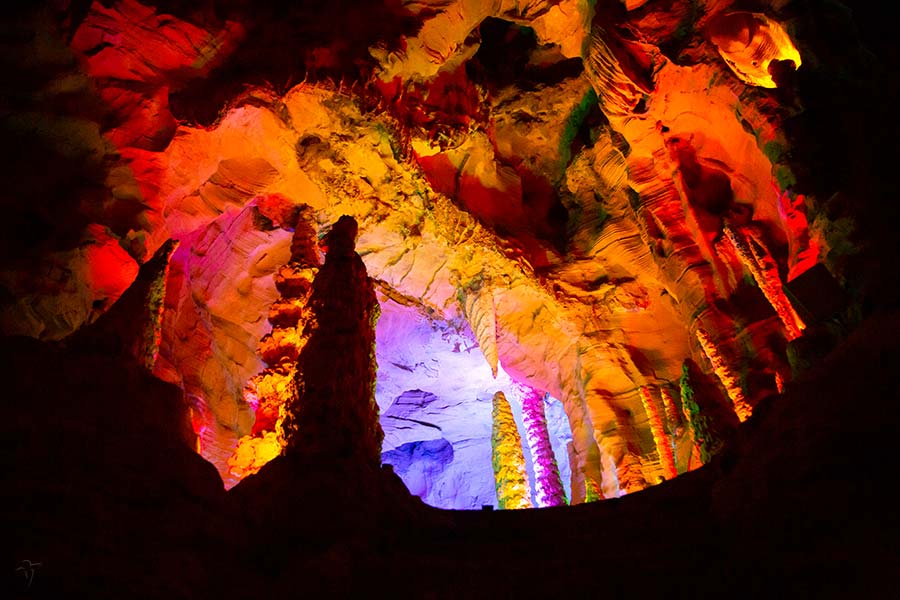
Qing Tian He.
Whether you are a history buff, an art enthusiast, or simply seeking a peaceful escape into nature, Qing Tian He promises an unforgettable experience. Prepare to be enchanted by the harmonious blend of cultural richness and natural splendor that defines this remarkable destination.
The Rich History and Legends of Qing Tian He
Nestled in the picturesque landscapes of southeastern Zhejiang Province, Qing Tian He, or the “Blue Sky River,” is more than a scenic getaway; it is a testament to the rich tapestry of Chinese history and culture. This area is imbued with legends and historical significance that date back thousands of years, making it a compelling destination for international travelers seeking to delve into China’s past.
Historical Significance
Qing Tian He is situated in Qingtian County, which has long been celebrated for its remarkable stone carving industry and as a significant cultural hub for the Chinese diaspora. The history of Qingtian stretches back to the Northern and Southern Dynasties (420-589 AD) when the Shimendong Cave, an important archaeological site, was first discovered. This cave is believed to hold remnants of ancient human activity, showcasing the area’s early human settlement.
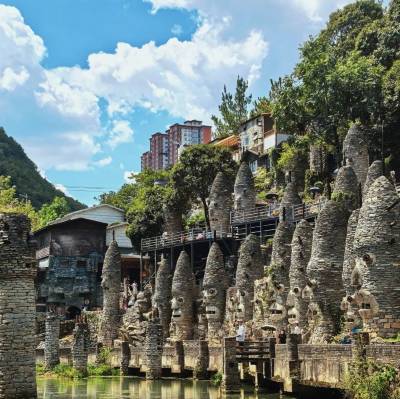
Qing Tian He.
As the centuries unfolded, Qingtian flourished during the Song, Ming, and Qing dynasties (960-1912 AD). Notably, it was here that Liu Ji, the founding father of the Ming Dynasty, sought education in his youth, solidifying the region’s intellectual importance. His legacy is still felt today, as many locals pay homage to his contributions through various cultural expressions and festivals.
Legends and Folklore
The legends surrounding Qing Tian He are as captivating as its historical backdrop. One prevalent tale is that of the “Blue Sky Goddess,” a mythical figure believed to protect the river and its surroundings. According to local lore, she descends from the heavens during times of drought to bless the land with rain, ensuring the prosperity of its people. This legend not only highlights the deep connection the locals have with nature but also reflects the spiritual beliefs that permeate the culture of Qingtian.
Another enchanting story involves the “Seven Fairies of the River,” who are said to dance on the water’s surface under the light of the full moon. It is believed that witnessing their ethereal ballet can bring good fortune and happiness, attracting both locals and tourists to the riverbanks at night, eager to catch a glimpse of this magical spectacle.

Qing Tian He.
Cultural Heritage
Qing Tian He is also home to several significant cultural sites. The Qingtian Muslim Temple (青田清真禅寺), a splendid example of Islamic architecture, stands as a reminder of the diverse cultural influences that have shaped this region. This temple not only serves as a place of worship but also as a cultural bridge connecting different communities.
The Qiansi Rock Culture Park offers visitors a glimpse into the artistic heritage of Qingtian, renowned for its exquisite stone carvings. Many of these carvings depict scenes from legendary tales and historical events, providing insight into the artistic expression and craftsmanship that has thrived in this region for centuries.
Conclusion
As you traverse the breathtaking landscapes of Qing Tian He, you will not just experience natural beauty but will also be immersed in a rich historical narrative intertwined with legends that have stood the test of time. Whether you are wandering the banks of the river or exploring its cultural landmarks, Qing Tian He offers a unique opportunity to connect with the vibrant history and cultural legacy of China. This enchanting destination stands not only as a testament to the past but also as a beacon inviting travelers to discover the stories that have shaped its identity.

Qing Tian He.
Main Highlights: What You Absolutely Can’t Miss
Discover the Unmissable Highlights of Qing Tian He Scenic Area
Nestled in the enchanting landscapes of Jiaozuo, Henan Province, Qing Tian He (青天河) offers an unforgettable blend of natural beauty and rich cultural history. Whether you’re drawn by serene rivers or the allure of traditional Chinese architecture, this scenic area promises captivating experiences for every traveler. Here are the must-see highlights that should top your itinerary when visiting Qing Tian He.
1. Qing Tian He Valley
This picturesque valley is the crown jewel of the scenic area, featuring crystal-clear waters that meander through lush greenery and dramatic cliffs. The tranquil environment is perfect for leisurely walks, photography, or simply soaking in the stunning vistas. The valley also boasts various hiking trails that cater to all skill levels, providing opportunities to explore the region’s natural wonders up close.
2. Shimen Cave (石门洞)
A glimpse into ancient history awaits at Shimen Cave, known for its natural rock formations and rich archaeological significance. Dating back to the Northern and Southern Dynasties, this site is not only a geological marvel but also a place steeped in myth and legend. Visitors can venture into the cave to admire its stalactites and stalagmites, often likened to the scenes from classic martial arts novels, making it a favorite among history buffs and adventure seekers alike.
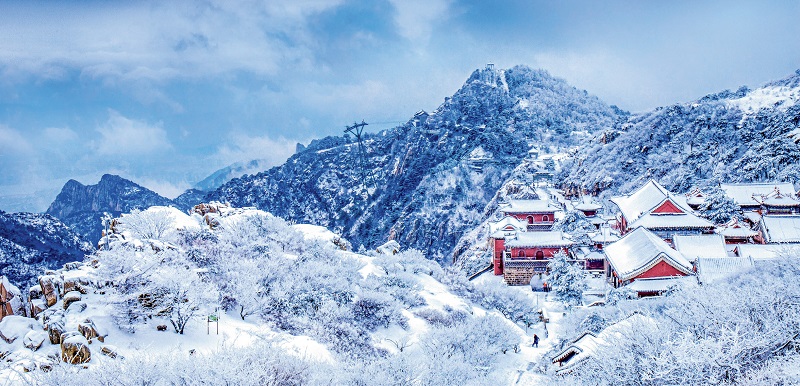
Qing Tian He.
3. Liu Ji Shrine (刘基祠)
Honoring Liu Ji, a revered figure from the Ming Dynasty and an influential military strategist, the Liu Ji Shrine is a cultural treasure that reflects traditional Chinese architectural elegance. The shrine is set amidst serene gardens, providing a tranquil spot for contemplation and reflection. Don’t miss the chance to learn about Liu Ji’s contribution to Chinese history and the local lore surrounding him.
4. Qingtian Muslim Temple (青田清真寺)
For those interested in religious architecture, the Qingtian Muslim Temple offers a unique perspective on the region’s cultural diversity. This mosque, characterized by its stunning design and serene atmosphere, serves as a place of worship for the local Hui community. Visitors are welcome to explore the intricate decorations and experience the peaceful ambiance that envelops the temple.
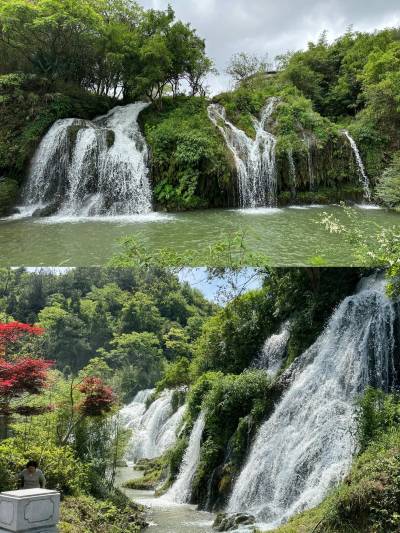
Qing Tian He.
5. Qiansi Rock Culture Park (千丝岩文化公园)
Immerse yourself in the artistic heritage of the region at Qiansi Rock Culture Park. This park showcases exquisite stone carvings and sculptures, celebrating Qingtian’s status as a stone-carving capital. Wander through the park to appreciate the craftsmanship and artistic expression that have been passed down through generations. It’s an excellent opportunity to engage with local artisans and perhaps purchase a unique piece of stone art as a memento.
6. Local Cuisine Experience
No visit to Qing Tian He is complete without indulging in the local culinary delights. Sample traditional dishes at local eateries, including the famous Qingtian rice noodles and spicy fish hotpot. Additionally, explore the bustling street food scene, where you can savor snacks like grilled skewers and dumplings, each bite telling a story of the region’s rich cultural tapestry.
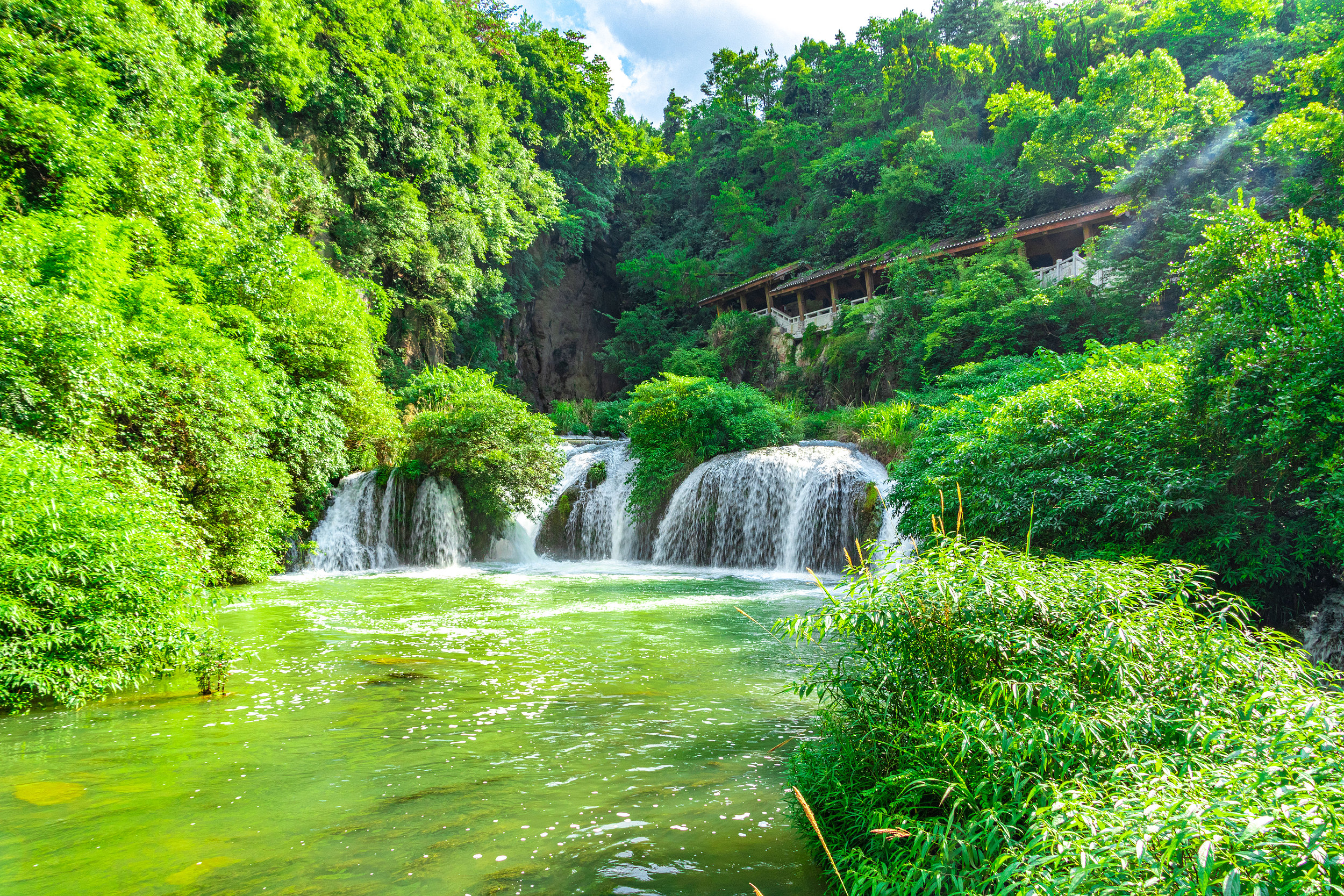
Qing Tian He.
7. Outdoor Activities
For the adventurous traveler, Qing Tian He offers a plethora of outdoor activities. Engage with the natural landscape through kayaking on the tranquil waters, cycling along scenic routes, or hiking through the lush trails. The area’s stunning scenery is ideal for both relaxation and exploration, making it a perfect destination for nature lovers and thrill-seekers alike.
8. Cultural Festivals
If your visit coincides with one of the local festivals, such as the Qing Tian He Water Festival, be sure to participate! These vibrant celebrations often feature traditional performances, local crafts, and delicious food, providing a deeper insight into the local culture and community spirit.
Qing Tian He is more than just a scenic area; it’s a vibrant tapestry of history, culture, and natural beauty. By exploring these highlights, you’ll not only experience the breathtaking landscapes but also connect with the rich heritage that defines this unique region of China.

Qing Tian He.
Planning Your Visit: A Practical Guide
Planning Your Visit: A Practical Guide
Exploring Qing Tian He (青天河风景名胜区) is a journey through breathtaking landscapes and rich cultural heritage. This practical guide will help you navigate your visit to this enchanting destination, ensuring a memorable experience.
Getting There
By Air:
The nearest major airport is Zhengzhou Xinzheng International Airport. From there, you can take a train or bus to reach Qing Tian He.
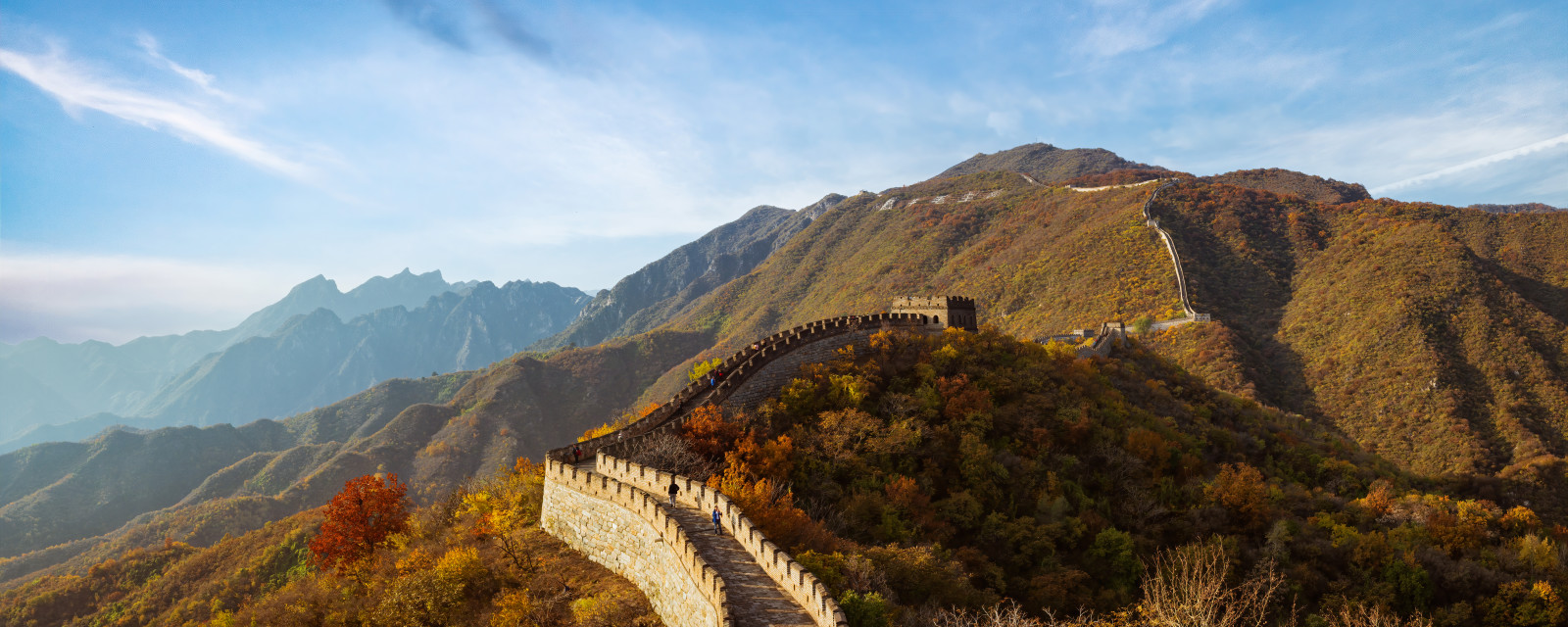
Qing Tian He.
By Train:
Qing Tian He is well-connected by rail. High-speed trains from major cities like Beijing, Shanghai, and Xi’an can take you to the nearby city of Jiaozuo. Once you arrive at Jiaozuo Station, local transportation options will be readily available.
By Car:
If you prefer driving, you can rent a car for a scenic road trip. The region is accessible via national highways, and the drive offers stunning views of the surrounding countryside.
Where to Stay
Accommodation options near Qing Tian He cater to different budgets and preferences:
- Luxury Hotels: For a lavish stay, consider the Qing Tian He Resort, which offers comfortable rooms with stunning views of the river and mountains.
- Mid-Range Hotels: Options like Jiaozuo Huayu Hotel provide cozy accommodations with essential amenities.
- Budget Stays: Guesthouses and hostels are available for travelers looking for economical choices, with warm local hospitality.
Exploring the Highlights
1. Scenic Beauty:
Qing Tian He is renowned for its picturesque landscapes. Don’t miss the stunning vistas from the Qing Tian River, where you can enjoy leisurely boat rides surrounded by lush greenery.
2. Cultural Sites:
– Qingtian Muslim Temple (青田清真禅寺): A beautiful structure that showcases Islamic architecture, providing insight into the region’s diverse cultural tapestry.
– Qiansi Rock Culture Park: A tribute to the area’s rich history, featuring stone carvings and sculptures that reflect local artistry.
3. Adventure Activities:
– Hiking and Nature Walks: Explore the numerous trails around the park, which cater to various skill levels. The Shimen Cave Scenic Area is particularly popular for its lush forest and stunning rock formations.
– Photography Opportunities: Capture the enchanting landscapes, especially at sunrise or sunset when the light beautifully illuminates the scenery.
Local Cuisine
Experiencing the local food is a must during your visit:
– Specialties: Try the famous Qingtian dumplings and local river fish dishes, which are often prepared with fresh, seasonal ingredients.
– Dining Options: There are many restaurants near the park that offer authentic local cuisine, as well as Western-style cafes for those seeking familiar flavors.
Practical Tips
- Best Time to Visit: The ideal seasons to visit are spring (March to May) and autumn (September to November) when the weather is mild and the scenery is at its most beautiful.
- What to Pack: Comfortable walking shoes are essential for exploring the scenic area. A light jacket is recommended for cooler evenings, especially if you plan to enjoy sunset views.
- Language: While Mandarin is the official language, many locals in tourist areas can communicate in basic English. Learning a few key phrases in Chinese can enhance your interaction with locals.
Transportation Within the Area
- Public Transport: Small blue taxis are available for short distances and are quite affordable. Alternatively, consider renting a bicycle to explore at your own pace.
- Guided Tours: If you prefer a structured experience, look for guided tours that offer comprehensive itineraries, including transportation and meals.
Conclusion
Qing Tian He is a treasure trove of natural beauty and cultural richness, making it an ideal destination for travelers interested in Chinese history and culture. With its stunning landscapes, delicious food, and welcoming atmosphere, a visit to this scenic area promises to be an unforgettable adventure. Plan your trip carefully, and immerse yourself in the magic of Qing Tian He!
Tickets: Prices, Booking, and Tips
Discovering Ticket Information for Qing Tian He
As you plan your visit to Qing Tian He (焦作青天河风景名胜区), understanding ticket prices, booking options, and useful tips will ensure a smooth and enjoyable experience. This stunning scenic area, known for its breathtaking landscapes and rich history, attracts international travelers keen on exploring China’s cultural heritage.
Ticket Prices
- General Admission:
-
The standard ticket price for entry into Qing Tian He is approximately ¥40 (Chinese Yuan). This fee grants access to the main attractions within the scenic area, including natural wonders and historical sites.
-
Discounts:
- Students & Seniors: Reduced tickets are available for students and seniors, typically around ¥20. It’s advisable to carry valid identification to avail of these discounts.
-
Group Rates: If you’re traveling with a group of more than 10 people, inquire about group ticket pricing, which often includes further discounts.
-
Special Events:
- Occasionally, Qing Tian He hosts special events or exhibitions. Admission prices for these events may vary, so check the official website or local tourism information for the latest updates.
Booking Options
- Online Booking:
-
To avoid long queues, consider booking your tickets online through platforms like Trip.com or the official Qing Tian He website. Online bookings often come with the added benefit of promotional discounts.
-
On-site Purchase:
-
Tickets can also be purchased at the entrance of Qing Tian He. However, during peak tourist seasons, it’s advisable to arrive early to secure your tickets and enjoy a more leisurely exploration of the site.
-
Guided Tours:
- For a more immersive experience, consider booking a guided tour. Many local travel agencies offer packages that include transportation, ticket prices, and a knowledgeable guide who can share insights about the area’s history and culture.
Tips for a Memorable Visit
- Timing Your Visit:
-
The best time to visit Qing Tian He is during the spring (March to May) and autumn (September to November) seasons when the weather is pleasant, and the natural scenery is at its most vibrant.
-
Transportation:
-
If you’re traveling from the city center, local buses and taxis are available, and you can also opt for car rentals for a more flexible travel schedule.
-
Plan Your Itinerary:
-
Allocate a full day to explore Qing Tian He and its surroundings. Must-see attractions include Shimen Cave, the Qingtian Muslim Temple, and the Qingtian Stone Carving Museum. Consider packing a picnic to enjoy amidst the stunning backdrops.
-
Stay Hydrated and Comfortable:
- Wear comfortable shoes, as you’ll be doing quite a bit of walking, and carry water to stay hydrated while exploring the scenic trails.
By understanding the ticketing process and following these tips, you can fully immerse yourself in the spectacular beauty and rich cultural tapestry that Qing Tian He has to offer. Enjoy your journey!
How to Get There: A Complete Transportation Guide
When planning your visit to Qing Tian He (焦作青天河风景名胜区), a breathtaking scenic area known for its stunning landscapes and rich cultural heritage, understanding the transportation options available is crucial to ensure a smooth journey. Here’s a comprehensive guide on how to get there and navigate the area effectively.
Reaching Qing Tian He
By Air
The nearest major airport to Qing Tian He is Zhengzhou Xinzheng International Airport (CGO), located approximately 100 kilometers away. This airport serves numerous domestic and international flights, making it a convenient entry point for international travelers.
- Transfer Options from Zhengzhou Airport:
- Airport Shuttle Bus: Regular buses run from the airport to downtown Zhengzhou, from where you can take a high-speed train to Jiaozuo.
- Taxi or Ride-Hailing Services: Taxis are available at the airport, and rideshare apps like Didi can also be used for convenience.
By Train
For many travelers, taking the train is the most efficient way to reach Qing Tian He. The Jiaozuo Railway Station is the closest station to the scenic area.
- High-Speed Trains:
- From Zhengzhou East Railway Station, high-speed trains to Jiaozuo take approximately 40 minutes. Trains run frequently throughout the day.
-
Ticket Booking: Tickets can be purchased online through various travel platforms or at the station.
-
Local Transport from Jiaozuo Railway Station:
- Taxi: A taxi ride from Jiaozuo Railway Station to Qing Tian He takes about 30 minutes.
- Public Buses: Local buses may be available, but they can be less frequent and may not be the most reliable option for time-sensitive travelers.
By Bus
Long-distance buses also connect various cities in Henan Province to Jiaozuo. This is a budget-friendly option, though travel times can vary significantly based on traffic conditions.
- Bus Stations: Buses can be caught from major bus terminals in cities like Zhengzhou and Luoyang. The trip to Jiaozuo typically takes 2-3 hours.
Getting Around Qing Tian He
Once you arrive at Qing Tian He, there are several convenient options for local transportation:
Walking
The scenic area itself is designed for exploration on foot, with well-marked trails and pathways leading to breathtaking viewpoints and attractions. Walking allows you to fully immerse yourself in the natural beauty of the surroundings.
Bicycles
Renting a bicycle is a popular way to navigate the area, providing both a fun and efficient means of transportation while allowing you to cover more ground.
Local Shuttle Services
During peak tourist seasons, local shuttle buses may operate within the scenic area, providing easy access to major attractions. Check with your accommodation for the latest information on available shuttle services.
Taxis and Ride-Hailing
Taxis are available for hire, and ride-hailing services like Didi are operational in the area, making it easy to reach specific destinations without the hassle of navigating public transport.
Tips for Travelers
- Language: While major transportation hubs often have English signage, not all drivers or staff will speak English. Having your destination written in Chinese can be very helpful.
- Cash: While mobile payments are prevalent in China (apps like WeChat Pay and Alipay), having cash on hand can be beneficial for small purchases, especially in rural areas.
- Timing: Always check the latest schedules for trains and buses, as they can change frequently. Arriving at stations early is advisable, especially during busy travel seasons.
With this transportation guide, you are well-equipped to embark on your journey to Qing Tian He and explore the stunning landscapes and rich history that this beautiful region has to offer. Safe travels!
Local Cuisine and Accommodation Nearby
Exploring the scenic beauty of Qing Tian He (Qingtian) is sure to work up an appetite, and this charming area is rich in culinary delights as well as comfortable accommodations. Whether you’re seeking a taste of local flavors or a cozy place to rest your head after a day of adventures, Qingtian has something to offer every traveler.
Culinary Highlights
1. Qingtian Cuisine:
Qingtian’s culinary landscape is a delightful reflection of its rich history and diverse cultural influences. Here are some must-try dishes:
-
Chuzhou Flavor: This regional cuisine is renowned for its fresh ingredients and vibrant flavors. Look out for dishes featuring locally-sourced vegetables and meats that are often prepared with traditional methods that have been passed down through generations.
-
Seafood Specialties: Given its proximity to water bodies, Qingtian offers an array of seafood dishes. Don’t miss trying the freshly caught fish and shellfish, often served with unique local sauces that enhance their natural flavors.
-
Stone Carving Noodles: A unique dish reflecting the local stone carving culture, these handmade noodles are a must-try. Often served in a rich broth, they provide a hearty meal perfect for refueling after exploring the scenic spots.
-
Local Snacks: Stroll through local markets to discover delightful snacks such as sweet rice cakes and savory dumplings. These small bites are perfect for a quick snack or to enjoy while soaking in the local atmosphere.
Recommended Dining Spots:
– Bai Xian Qian Wan Restaurant: Popular among locals for its authentic representation of Chuzhou cuisine, this restaurant offers a cozy atmosphere and a diverse menu.
- Qingtian Muslim Temple Dining Hall: This hall serves delicious halal food, showcasing the area’s cultural diversity. The meals are fresh, flavorful, and prepared with care.
Accommodations Nearby
When it comes to resting your weary head, Qingtian boasts a variety of accommodations that cater to different preferences and budgets.
1. Longqiyuan Fangcaodi Resort Hotel:
– Nestled in a serene location surrounded by mountains and streams, this resort offers a unique blend of nature and luxury. With spacious rooms featuring stunning views, it’s an ideal place for families and couples looking for a peaceful retreat.
-
Facilities: Visitors can enjoy an outdoor infinity pool, a well-equipped gym, and an all-day dining restaurant that serves a mix of local and international cuisines.
-
Location: Just a short drive from key attractions, this hotel offers easy access to the scenic beauty of the surrounding area.
2. Qingtian Stone Carving Hotel:
– Reflecting the local heritage, this hotel features decor inspired by the region’s renowned stone carvings. Rooms are comfortable and well-appointed, ensuring a relaxing stay.
- Dining Options: On-site dining offers local specialties, allowing guests to immerse themselves in Qingtian’s culinary delights without venturing far.
3. Budget-Friendly Hostels:
– For travelers on a budget, there are several hostels and guesthouses available offering clean, comfortable accommodations at affordable prices. These places often have a communal vibe, making them perfect for meeting fellow travelers.
Conclusion
Qingtian is not just a feast for the eyes with its breathtaking landscapes and historical sites but also a haven for food lovers and comfort seekers. Whether indulging in the rich local cuisine or settling into a cozy hotel, your experience in this enchanting area of China is sure to be memorable. Enjoy your culinary and cultural journey through the heart of Qingtian!
Frequently Asked Questions
Frequently Asked Questions about Qing Tian He Scenic Area
1. Where is Qing Tian He located?
Qing Tian He, or the Qing Tian River Scenic Area, is situated in the city of Jiaozuo in Henan Province, China. It is renowned for its breathtaking natural landscapes, featuring clear waters, lush greenery, and dramatic rock formations.
2. What are the main attractions within Qing Tian He?
Visitors can explore several captivating sites, including:
– Stone Gate Cave (Shimendong): A historical cave dating back to the Northern and Southern Dynasties, known for its unique geological features.
– Shimen Waterfall: A stunning waterfall that provides a picturesque backdrop and opportunities for photography.
– Lingyou Temple: A serene temple set amidst nature, ideal for reflection and meditation.
– Liuji Shrine: Commemorating the Ming dynasty founder Liu Ji, this shrine is rich in historical significance.
3. How can I get to Qing Tian He?
Travelers can reach Qing Tian He by taking a high-speed train to Jiaozuo Railway Station. From there, local buses and taxis are available to transport you to the scenic area. Alternatively, renting a car is a convenient option to explore the surrounding attractions at your own pace.
4. What is the best time to visit Qing Tian He?
The ideal time to visit Qing Tian He is during spring (April to June) and autumn (September to November) when the weather is mild and the natural scenery is at its most vibrant. Summer can be hot, while winter may bring colder temperatures, but each season offers its own unique charm.
5. Are there accommodations available near Qing Tian He?
Yes, there are a variety of accommodations available near Qing Tian He, ranging from budget guesthouses to luxury hotels. Options typically include local inns that provide a cozy atmosphere, as well as modern hotels that offer amenities like dining and recreational facilities.
6. What local cuisines should I try while visiting?
When in the Jiaozuo area, don’t miss out on local delicacies such as:
– Guo Bao Rou: A sweet and sour fried pork dish.
– Suan Ni Bai: A traditional garlic dish that’s both flavorful and aromatic.
– Noodles: Various handmade noodles that reflect local culinary traditions.
Be sure to visit local restaurants and street vendors for an authentic taste of the region!
7. Are there guided tours available in Qing Tian He?
Yes, many local tour operators offer guided tours of Qing Tian He. These tours often include transportation, a knowledgeable guide, and visits to the main attractions, providing an enriching experience that enhances your understanding of the area’s history and culture.
8. Is Qing Tian He suitable for families and children?
Absolutely! Qing Tian He is a family-friendly destination, offering various activities such as hiking, boating, and nature exploration. The scenic area is safe and provides ample opportunities for children to engage with nature and learn about the rich cultural heritage of the region.
Final Thoughts on Your Trip
As your journey through Qing Tian He comes to a close, it’s clear that this remarkable destination offers a unique blend of natural beauty, rich history, and vibrant culture that is sure to resonate with every traveler.
A Journey Through Time and Nature
From the breathtaking vistas of the Shimen Cave Scenic Area to the intricate artistry showcased in the Qingtian Stone Carving Museum, every corner of Qing Tian He tells a story. This region, steeped in history and tradition, invites you to explore its past while immersing yourself in its stunning landscapes. The echoes of the Ming dynasty, coupled with the serenity of lush forests and cascading waterfalls, provide a perfect backdrop for reflection and appreciation.
Culinary Delights and Local Experiences
Do not forget to indulge in the local flavors that make Qingtian a culinary gem. The vibrant markets and eateries serve an array of dishes that reflect the region’s rich cultural tapestry. Sampling local specialties will not only satiate your hunger but also deepen your understanding of the area’s heritage.
Cultural Connections and Lasting Memories
Moreover, the warm hospitality of the locals, many of whom are part of the Chinese diaspora, creates a welcoming atmosphere that enhances your experience. Engaging with the community, whether through visiting the Qingtian Muslim Temple or exploring the Overseas Chinese Import Commodity City, will leave you with lasting memories and a deeper connection to this unique locale.
Final Reflection
As you prepare to depart, take a moment to absorb the beauty around you and reflect on the stories you’ve encountered. Qing Tian He is not just a destination; it’s a tapestry woven with history, culture, and nature—waiting to be unraveled by your curiosity and spirit of adventure. Whether you are a history buff, a nature lover, or a culinary enthusiast, Qing Tian He promises an experience that will enrich your understanding of China’s diverse cultural landscape.
We hope your visit has inspired you to return, explore further, and share the beauty of Qing Tian He with others. Safe travels!